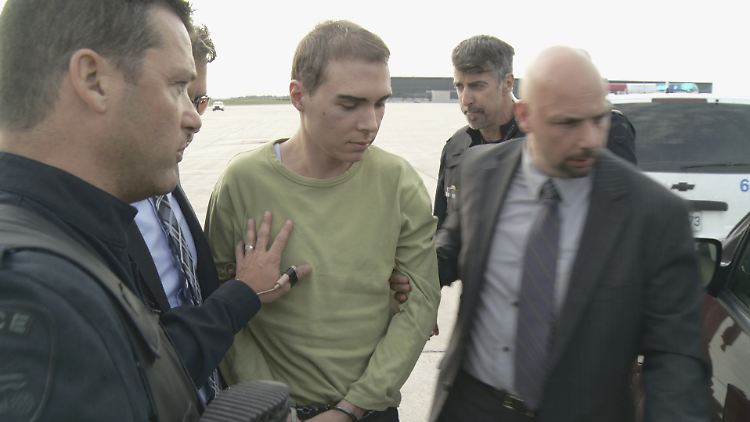Even more blatant than in the film
Shocker “crime scene” has a real model
By Julian Vetten
April 7, 2024, 9:50 p.m
Listen to article
This audio version was artificially generated. More info | Send feedback
Some people will do a lot for a little attention, in the current “crime scene” they even murder for it. Anyone who thinks this is a screenwriter’s exaggerated fantasy doesn’t yet know the Magnotta case.
“Look at Me” is not your average feel-good crime thriller, where a murder has to serve as a hook to show beautiful landscapes on television. “Look at me” is really hard stuff and generally not something you would expect to see on the first on a Sunday evening. The story about an attention-hungry sadist who posts his torture and murder videos online is based on a real story – and it’s even more violent than the television crime thriller itself.
In 2012, Luka Magnotta made the headlines for weeks because he stabbed his ex-lover with an ice pick in front of the camera, ate his meat and posted the video of the crime online. However, the story had started long before, with seemingly harmless videos of himself. But the content soon changed: disturbing videos in which kittens were tortured and killed appeared. “Since the police couldn’t or didn’t want to do anything about it, thousands of users and animal rights activists around the world came together to uncover the identity of the sadistically inclined perpetrator,” remembers screenwriter and director Christoph Stark of the case, which served as a template for “Look at me ” serves.
“In months of work, they had evaluated Magnotta’s photos, videos and posts on the Internet in order to find him. They were driven by the fear that someone’s death could be seen in one of his next videos. They were proven right.” But Magnotta kept slipping away from them, hidden behind changing identities, digital traces that led nowhere – and a police force that stood by and did nothing.
Online community hunts a murderer

The case of Luka Magnotta (M., here in 2012 when he was arrested) served as inspiration for the “crime scene”.
(Photo: picture alliance / ZUMAPRESS.com)
The digital hunt escalated in 2012 when Magnotta killed and dismembered Chinese student Jun Lin – his ex-lover – in Montreal, Canada. He filmed his crime, posted the video online, and only then did the authorities take action, triggering an international manhunt for Magnotta. The online community that originally banded together to stop an animal abuser was now hunting a murderer. As in the current “crime scene,” users used social media, forensic analysis and digital detective work to track Magnotta’s movements, unmask his identities and ultimately provide authorities with valuable clues.
Magnotta’s arrest in an Internet café in Berlin while he was reading news stories about himself marked the end point of an unprecedented digital chase. He was extradited to Canada, where he was brought to justice and sentenced to life in prison for the murder of Jun Lin.
“Tatort” director Stark tries to explain the unimaginable crime: “Shooters and serial killers act for a variety of reasons: frustration, loneliness, desperation, hatred. But their goal is often the same: they want to be at the center for once in their lives stand out in the spotlight and thus become unforgettable, even immortal.”

